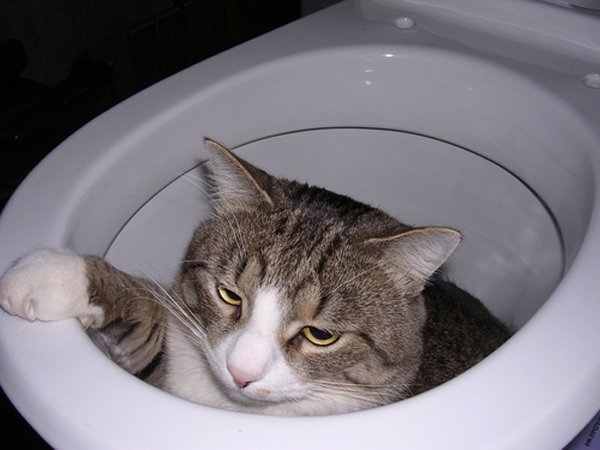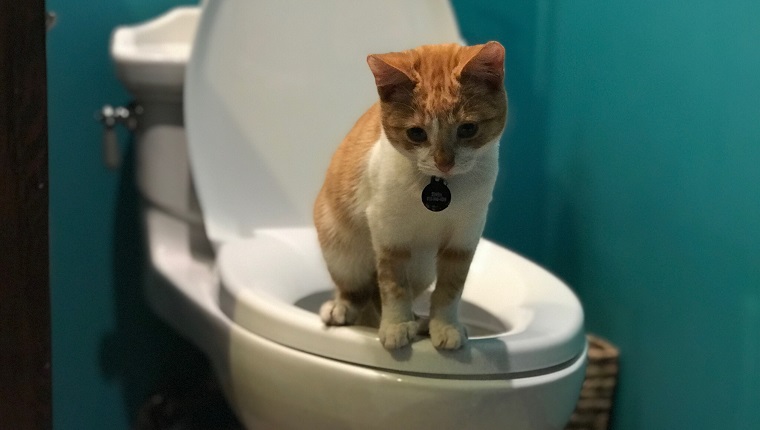Never Flush Cat Poop Down Your Toilet - Safeguard Your Pipes System
Never Flush Cat Poop Down Your Toilet - Safeguard Your Pipes System
Blog Article
Every person maintains their own idea about How to Dispose of Cat Poop and Litter Without Plastic Bags.

Introduction
As feline proprietors, it's essential to bear in mind how we dispose of our feline pals' waste. While it might appear hassle-free to purge pet cat poop down the toilet, this method can have harmful effects for both the atmosphere and human health.
Alternatives to Flushing
The good news is, there are much safer and extra responsible methods to deal with feline poop. Take into consideration the following options:
1. Scoop and Dispose in Trash
One of the most usual method of throwing away pet cat poop is to scoop it right into a biodegradable bag and throw it in the garbage. Be sure to use a dedicated litter inside story and dispose of the waste promptly.
2. Usage Biodegradable Litter
Go with eco-friendly feline litter made from products such as corn or wheat. These trashes are environmentally friendly and can be securely taken care of in the garbage.
3. Bury in the Yard
If you have a backyard, think about hiding feline waste in a marked location away from vegetable yards and water sources. Make sure to dig deep adequate to stop contamination of groundwater.
4. Mount a Pet Waste Disposal System
Purchase an animal garbage disposal system particularly created for feline waste. These systems make use of enzymes to break down the waste, decreasing smell and ecological influence.
Health and wellness Risks
Along with environmental problems, purging feline waste can likewise pose wellness threats to humans. Cat feces might include Toxoplasma gondii, a bloodsucker that can cause toxoplasmosis-- a potentially serious health problem, specifically for expectant females and people with weakened immune systems.
Ecological Impact
Flushing cat poop presents unsafe microorganisms and parasites right into the water system, posing a substantial risk to marine communities. These impurities can negatively influence marine life and compromise water top quality.
Conclusion
Accountable pet dog possession extends beyond supplying food and sanctuary-- it additionally includes correct waste monitoring. By avoiding flushing feline poop down the commode and opting for different disposal techniques, we can reduce our environmental footprint and protect human health.
Why Can’t I Flush Cat Poop?
It Spreads a Parasite
Cats are frequently infected with a parasite called toxoplasma gondii. The parasite causes an infection called toxoplasmosis. It is usually harmless to cats. The parasite only uses cat poop as a host for its eggs. Otherwise, the cat’s immune system usually keeps the infection at low enough levels to maintain its own health. But it does not stop the develop of eggs. These eggs are tiny and surprisingly tough. They may survive for a year before they begin to grow. But that’s the problem.
Our wastewater system is not designed to deal with toxoplasmosis eggs. Instead, most eggs will flush from your toilet into sewers and wastewater management plants. After the sewage is treated for many other harmful things in it, it is typically released into local rivers, lakes, or oceans. Here, the toxoplasmosis eggs can find new hosts, including starfish, crabs, otters, and many other wildlife. For many, this is a significant risk to their health. Toxoplasmosis can also end up infecting water sources that are important for agriculture, which means our deer, pigs, and sheep can get infected too.
Is There Risk to Humans?
There can be a risk to human life from flushing cat poop down the toilet. If you do so, the parasites from your cat’s poop can end up in shellfish, game animals, or livestock. If this meat is then served raw or undercooked, the people who eat it can get sick.
In fact, according to the CDC, 40 million people in the United States are infected with toxoplasma gondii. They get it from exposure to infected seafood, or from some kind of cat poop contamination, like drinking from a stream that is contaminated or touching anything that has come into contact with cat poop. That includes just cleaning a cat litter box.
Most people who get infected with these parasites will not develop any symptoms. However, for pregnant women or for those with compromised immune systems, the parasite can cause severe health problems.
How to Handle Cat Poop
The best way to handle cat poop is actually to clean the box more often. The eggs that the parasite sheds will not become active until one to five days after the cat poops. That means that if you clean daily, you’re much less likely to come into direct contact with infectious eggs.
That said, always dispose of cat poop in the garbage and not down the toilet. Wash your hands before and after you clean the litter box, and bring the bag of poop right outside to your garbage bins.
https://trenchlesssolutionsusa.com/why-cant-i-flush-cat-poop/

I'm just very enthusiastic about How to Dispose of Cat Poop and Litter Without Plastic Bags and I really hope you appreciated my page. If you please take the opportunity to share this content if you liked it. We treasure reading our article about Can You Flush Cat Poo or Litter Down the Toilet?.
About Report this page